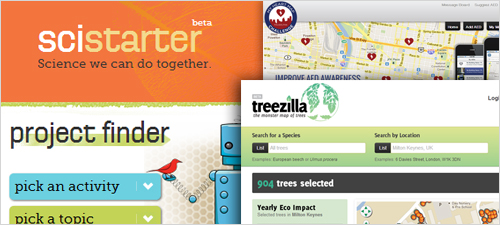All blog posts
<- View categories
-
NSF SBIR Grant Awarded to Develop a Web-based Historical Geocoder
The Temporal Geocoder will enable historians, librarians, archivists, scholars and the public to assign geographic locations to historical materials housed in libraries, archives and museums, enabling broader access and location-based searching.
-
NSF SBIR Grant Awarded to Develop a Web-based Historical Geocoder
The Temporal Geocoder will enable historians, librarians, archivists, scholars and the public to assign geographic locations to historical materials housed in libraries, archives and museums, enabling broader access and location-based searching.
-
What is “Citizen Science”?
In this post, we define citizen science and explain how we’ve engaged with the concept as an organization.

-
GeoTrellis 0.8 Has Arrived!
The GeoTrellis team is very excited to announce the availability of GeoTrellis 0.8 (codename “Atlantis”), which is a major new release that is a huge step forward toward our goal of a general purpose, high performance geoprocessing library and runtime designed to perform and scale for the web.

-
Letting Go
In this post we discuss how to tackle technical debt, and why it is important to delete code.
-
Unit Testing Apps With JSTest.NET and require.js
We outline our experience unit testing apps with JSTest.NET and require.js.
-
Applying Map Algebra – Part 2
This is the second in a series of articles on applying Map Algebra to solving problems. In the last installment, I discussed beginning to develop a habitat model as an example through which to apply map algebra. Now that there is a defined study area, it is time to dig into the model itself.
-
Iterating over consecutive items with Underscore.js
In this post we explore iterating over consecutive items with Underscore.js.
-
New Releases: Help Us Test the New GeoTrellis 0.8 Release Candidate!
The GeoTrellis team has been hard at work for the past few months, adding new geographic analysis operations and otherwise improving the performance of our open-source toolkit for high-performance geoprocessing.

-
Applying Map Algebra – Part 1
Over a series of blog posts, we will take a look at map algebra functions (that are currently or will be soon incorporated into GeoTrellis) by creating a site suitability model using wildlife habitat preferences.
-
Follow Up to Determining if a Spherical Polygon Contains a Pole
In this post we provide an update to our previous blog about poles in spherical polygons. Here, we investigate whether the previous algorithm can handle a polygon with a point directly on the pole.